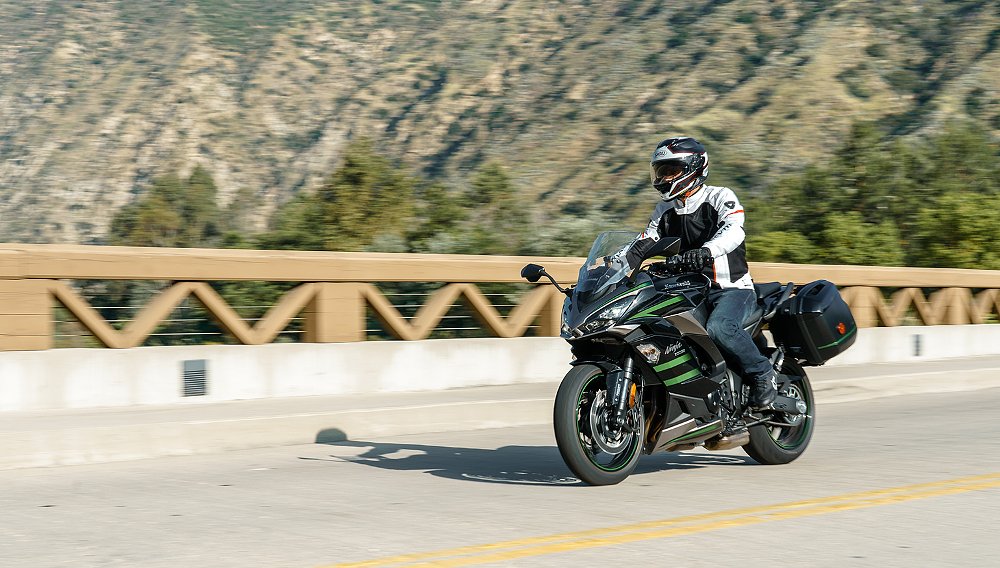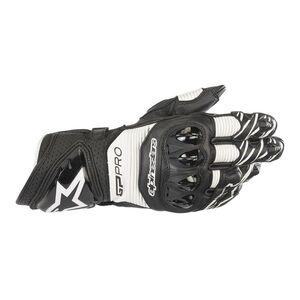So you think you want to go fast, eh, sonny Jim? Have you considered something with saddlebags, cruise control, and heated grips? What’s that you say? Sport-touring motorcycles aren’t fast enough for you?
If that’s the case, let me hit you with some follow-up questions: How much slower do you think a sport-touring bike is than a showroom-stock, 1,000 cc sport bike? Would that street-legal superbike be faster on a top-speed run? A quarter-mile drag race? What about a lap-time challenge at a race track?
Well, as it happens it’s our job here at Common Tread to chase these curiosities, and so we arranged a showdown: One motorcycle to represent the modern showroom-superbike class, pitted against three fast challengers from all walks of the sport-touring world in a series of performance tests. While we were at it, we made an episode of Common Tread XP. Easy (and fun) enough, right?
But, which machines to select to represent the two categories? Our main criteria for performance touring bikes were 17-inch wheels, saddlebags as a factory option, and either branding or mechanical attributes that related to a sport bike sibling. Sport-touring motorcycles come in all different shapes and sizes these days, with a variety of capability and price tags, but one thing is for sure: The fast ones are extremely fast. To name a few, BMW’s S 1000 XR, Ducati’s Multistrada V4 Pikes Peak, and Kawasaki’s supercharged H2 SX. Aprilia even joined the fray by offering factory luggage and a taller windscreen on its Tuono V4.
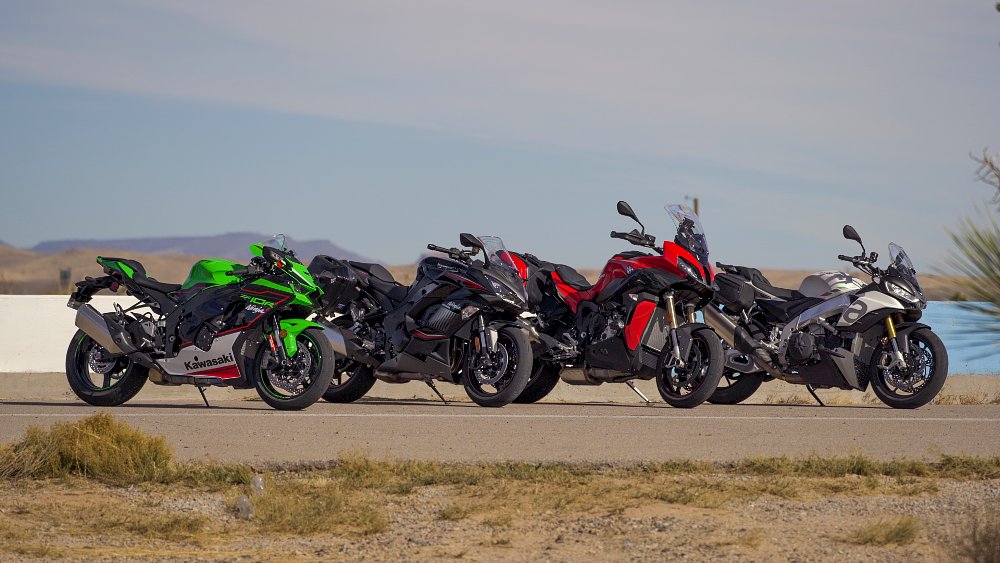
In the end, our decision was made easier by a shipping incident that left the Multistrada V4 Pikes Peak unavailable for our test and Kawasaki not having an H2 SX available (a Ninja 1000SX stood in, which offered less power but also less weight and a more reasonable base price). The good news is that we were left with a lovely spread of what the ST category has to offer — a classic sporty tourer in Kawasaki’s Ninja 1000 SX, a potent “tall-rounder” in the S 1000 XR, and a thinly veiled Tuono V4 super-naked masquerading as a touring rig.
And for our showroom superbike stand in? Ohhh yes, you’d better believe we thought about using Dave the Gixxer as the torch bearer, but in the end we settled on Kawasaki’s ZX-10R, which was updated in 2021 and has long been an extremely capable machine in stock form. To the hardcore Dave fans, it may please you to learn that while working on another project we rode a 2021 ZX-10R alongside Mr. David on a track together and found them to be similarly quick.
So, a quick rundown of the competitors and what each of them brought to the ring:
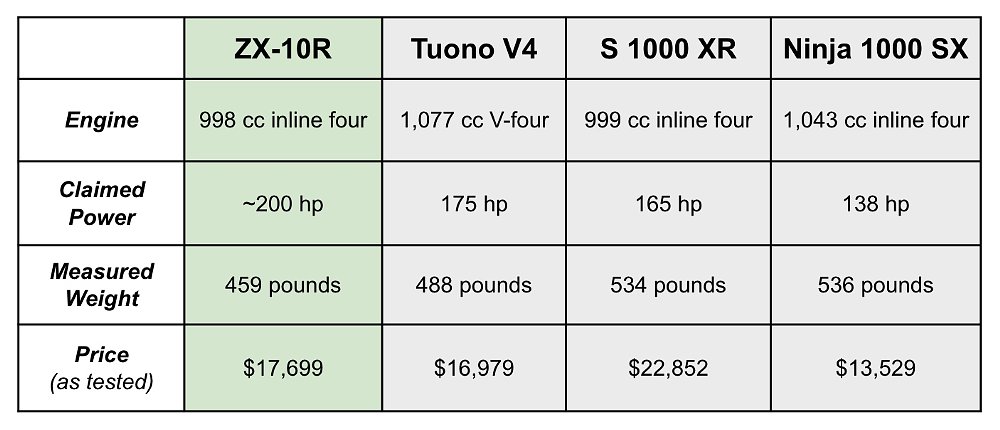
WFO
In order to test top speed and acceleration performance, you need a dedicated facility. Since our budget at Common Tread XP isn’t huge, we headed for the only place we could find that suited the testing regimen: New Mexico. In other words, this program is brought to you in part by The Land of Enchantment State Police, which kindly arranged for two cruisers and two highway maintenance trucks to intermittently shut down four miles of Route 26 outside Deming — all so that we could see just how fast these bikes would go at full stick. We paid them in smiles and granola bars. Lovely people.
We can only recommend watching the video for all of the thrills and spills of our top-speed test, but the results with regard to sport bikes versus sport-touring bikes were somewhat predictable. The Ninja 1000 hit 152 mph, the S 1000 XR managed 157 mph, and the Tuono-with-fanny-packs sprinted up to a maximum speed of 173 mph. And all of those numbers were bested by the ZX-10R’s slippery bodywork and 'round-about 200 horsepower, which registered a maximum speed of 181 mph on the GPS unit.
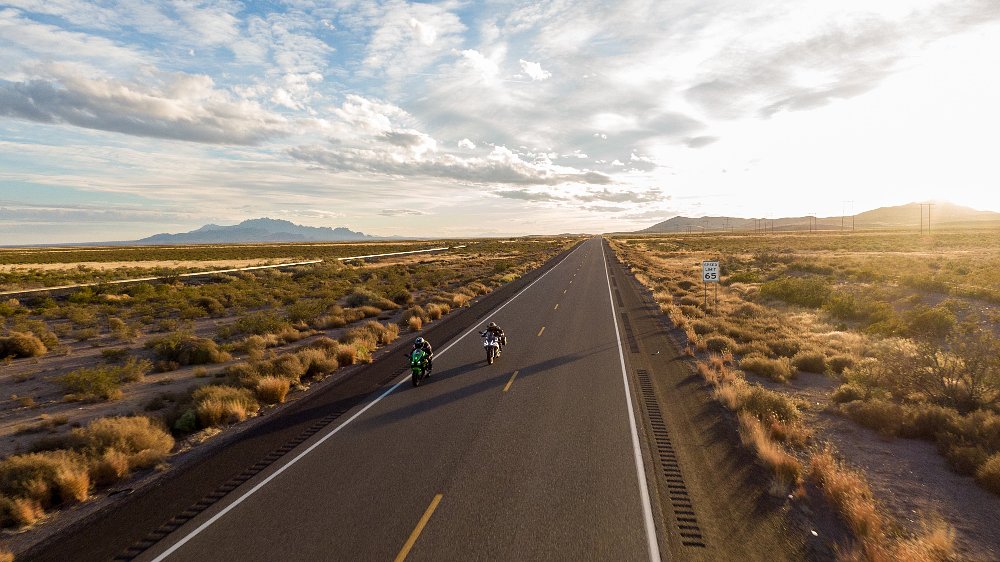
No surprises, really, though we did stumble across some fun testing notes along the way. At one point the Ninja 1000 jettisoned a saddlebag and gained four mph of top speed, and the BMW went faster in fifth gear than in sixth. The ZX-10R, on the other hand, was just about against the rev ceiling in sixth gear, meaning taller gearing might have actually made a difference. Last of all, you could say the price and speed disparity between the Ninja 1000 and S 1000 XR was pretty eye opening. The Ninja 1000 has always been underrated, but only giving up five mph to the BMW is impressive, considering it costs almost $10,000 less. Top speed is largely a battle of frontal area versus horsepower, and the Beemer is a tall (and wide) drink of water.
The classic sprint
Having thoroughly tapped our adrenal glands and run out of snacks for the fuzz, we retreated to the paddock of Arroyo Seco Raceway. Nestled next to the lonely Interstate 10 in southern New Mexico, Arroyo Seco offers a drag strip and a 1.4-mile road course which we used, in that order, for the next two tests. First, a quarter-mile sprint. We warmed up with some runs down the strip, careful not to overcook any clutch plates, and immediately hit a snag. Our preliminary times were too fast. A 10.1-second run on a 540-pound sport-tourer? Unlikely.
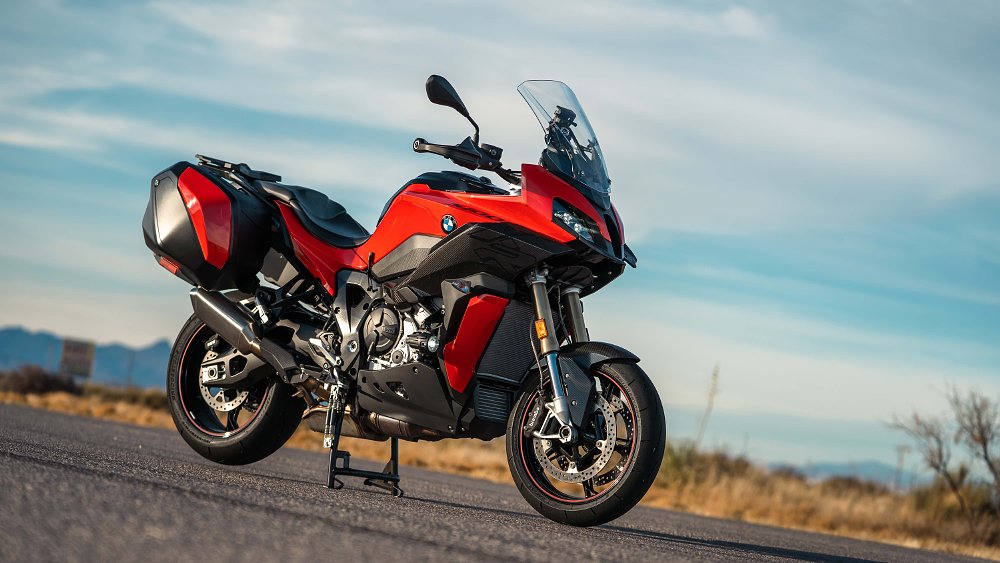
Either we had set the quickest S 1000 XR quarter-mile time in history, or our new GPS units weren’t recording the launches accurately. After some more research, futzing with apps, and Ari spending time on the phone with Koso customer service, we determined that it was a mix of us not using the equipment quite right and the settings in the system being incorrect. It didn’t matter what the reason was, we were out of time and we needed to see which bikes were faster. We decided to settle it by way of a simple point-to-point drag race, with a classic 3-2-1-go countdown.
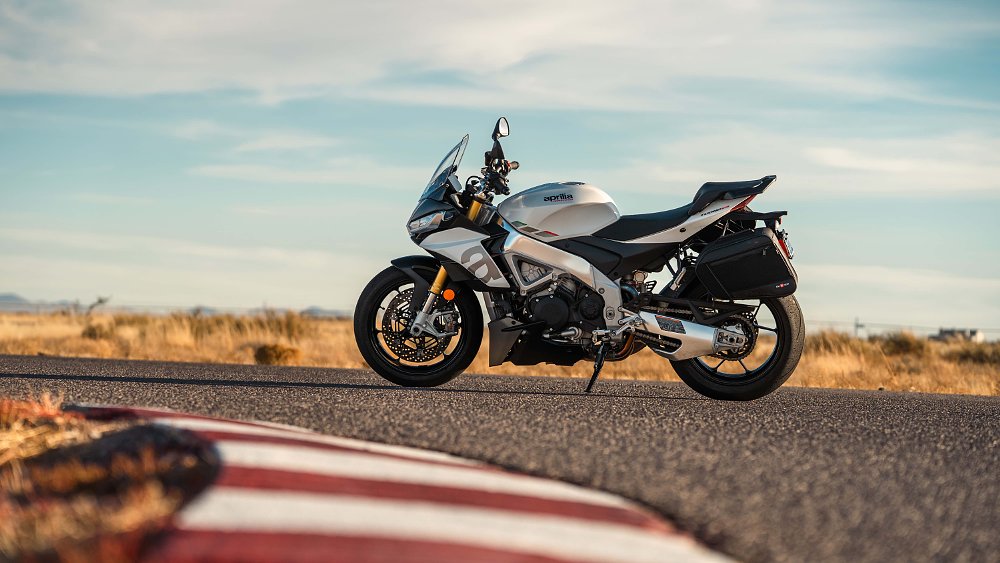
Yet again, the results were exactly what you would expect. The Ninja 1000 got trounced by its big brother and the S 1000 XR only fared a little better. Last up, Aprilia’s fire-breathing V4 tried to keep pace with the ZX-10R but didn’t have the legs either. During our first ride of the Tuono V4, and the subsequent episode of Daily Rider, we learned that Aprilia has electronically limited the performance of the beastly V-four powerplant in the first couple of gears. Basically, rather than having wheelie control react to potentially vicious wheelies, the IMU data blends with an algorithm to limit the engine’s output, leading to “more predictive wheelie control.”
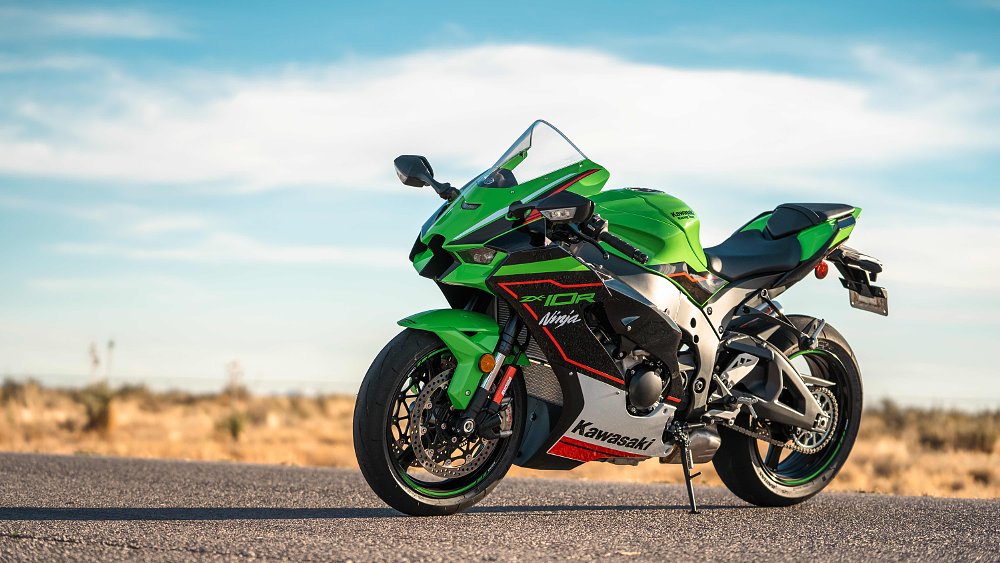
On the one hand, this makes sense. The Tuono V4 is monumentally powerful, and it’s not outlandish to consider that members of the public might not be trusted with every ounce of its cosmic thrust. Onnnn the other hand, if a bike like the Tuono V4 can’t be raw and pure, if the most drool-worthy and glittering examples of our lovely pastime are dumbed down, what do we have to keep ourselves dreaming? What do we tell our children? There is a Tuono 660 now — it’s a treat, and it’s reasonable. Riding a 1,077 cc V-four should have little to do with reason. It should drink the Earth’s blood and roar like a chorus of demons and not apologize for anything.
Sorry, where were we? Right, so the Tuono V4 lost the drag race with the ZX-10R because it’s heavier and doesn’t make as much power as Kawasaki’s box-stock superbike. And the saddlebags probably didn’t help. That’s the point. Crucially, it meant that the first two tests had gone the way of the inimitable sport bike.
A lap-time showdown
At this point, we had spent a fair amount of time and money to answer a question that didn’t need asking. However, it was clear from the get-go that the dozen or so turns of Arroyo Seco Raceway were the best bet for one of these modern sport-touring bikes to show their potential. It’s worth noting that the Ninja 1000 isn’t really related to the ZX-10R in any real way, apart from the name, having grown from an adjacent branch on the Kawasaki tree. The S 1000 XR and Tuono V4, though, have real pedigree. Beating hearts and engineering genetics with bloodlines that trace directly to BMW and Aprilia liter-class sport bikes.
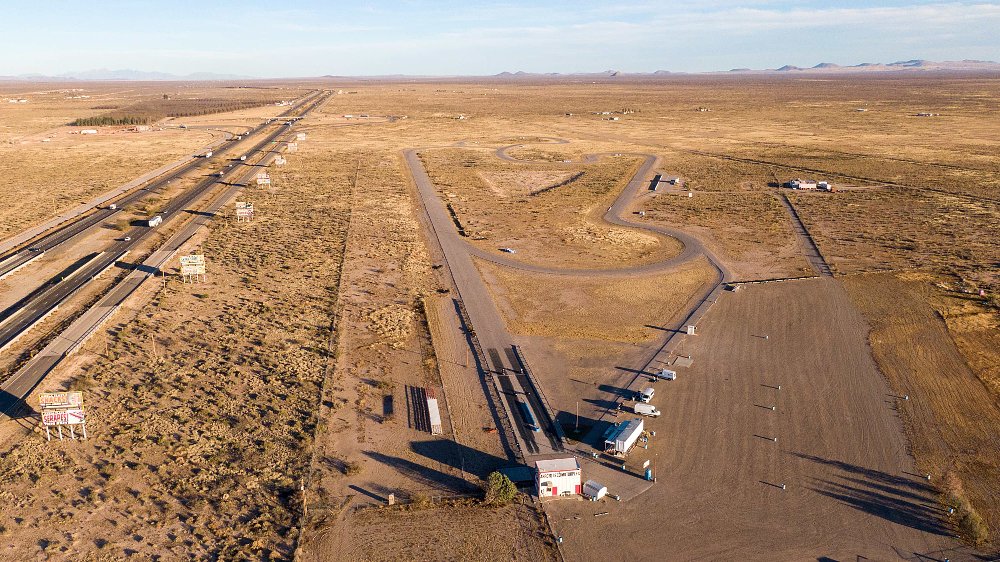
Again, we warmed up slowly over the course of a morning, learning the layout of the track and following each other to study lines, all while being careful not to toast the tires. Each bike would get a maximum of five flying laps, for equity and for feasibility in the schedule, and if there was any funny business we would trade bikes to verify the results. We decided Kawasaki’s ZX-10R should take to the track first, being that expectations were so high. The production version of the bike Jonathan Rea used to win six straight Superbike World Championships carved and squirmed its way around the track to an elapsed time of 1:14.4. (More later on what worked and what didn’t.)
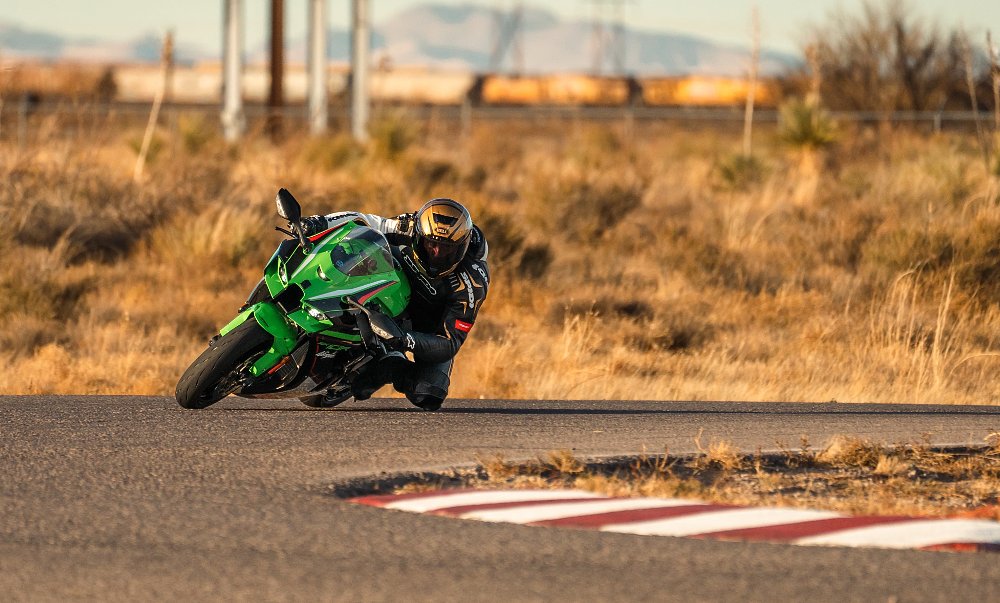
Obviously we had no idea if that time was any good, but it didn’t matter. It was a benchmark. The first attempt to best the ZX-10R’s time was the Ninja 1000 which, aside from the saddlebags that we left on for the track portion, faced some uphill battles. The different ride modes and electronic adjustments are fairly rudimentary for high-performance riding, and the non-switchable ABS is intrusive at race-track speed. Trail braking into a couple of Arroyo Seco’s decreasing-radius curves, the Ninja 1000’s front brake lever pulsed and left the rider hoping it would slow down enough to make the turn. It always did, but there were some exciting moments.
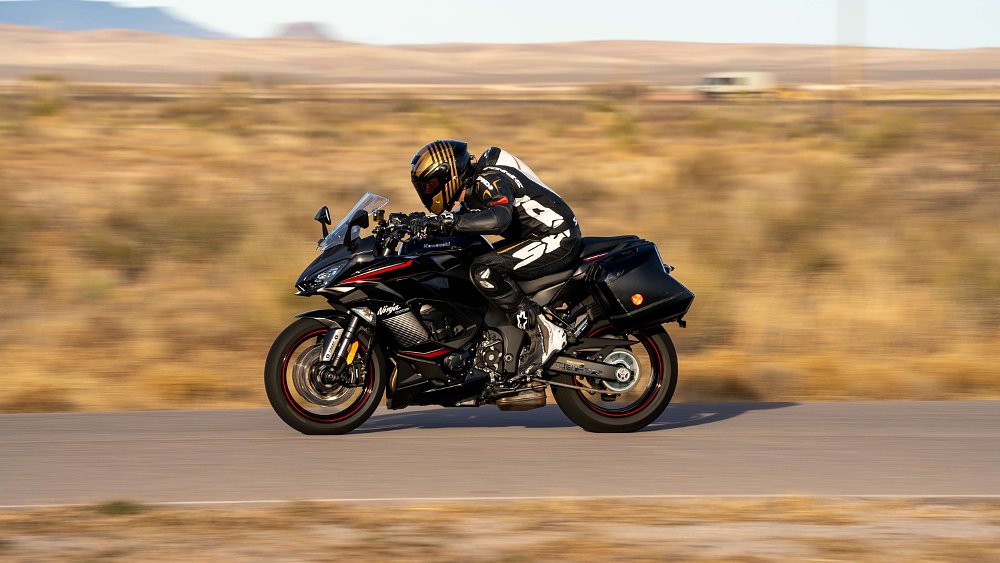
The good news is that the chassis on the 1000 SX lives up to the Ninja name. It swings from side to side quickly and accurately, with plenty of feel from the front end. Plus, the engine is good. It doesn’t scream up to redline and deliver 200 horses to the rear wheel like the ZX-10R, but the Ninja 1000’s mill is satisfying and grunty, and the quickshifter adds a whiff of actual sporting character. It drags footpegs, it wiggles and wallows a little bit from softish suspension settings, but it is a predictable and willing track partner. Huge fun.
That said, fun doesn’t charm a lap timer, and the Ninja 1000’s time came in at 1:17.0, a fat 2.6 seconds slower than the plated superbike. The S 1000 XR has electronically tunable suspension that can be set much stiffer than the Ninja 1000, and it makes about 30 more horsepower (weight is virtually identical). The S 1000 XR suffers from the same street-bikey electronics, in so much as there isn’t truly enough adjustability to tune appropriately for the track. After a few intrusions of traction control on corner exit the system was turned off completely, as we reached for the best possible lap time.
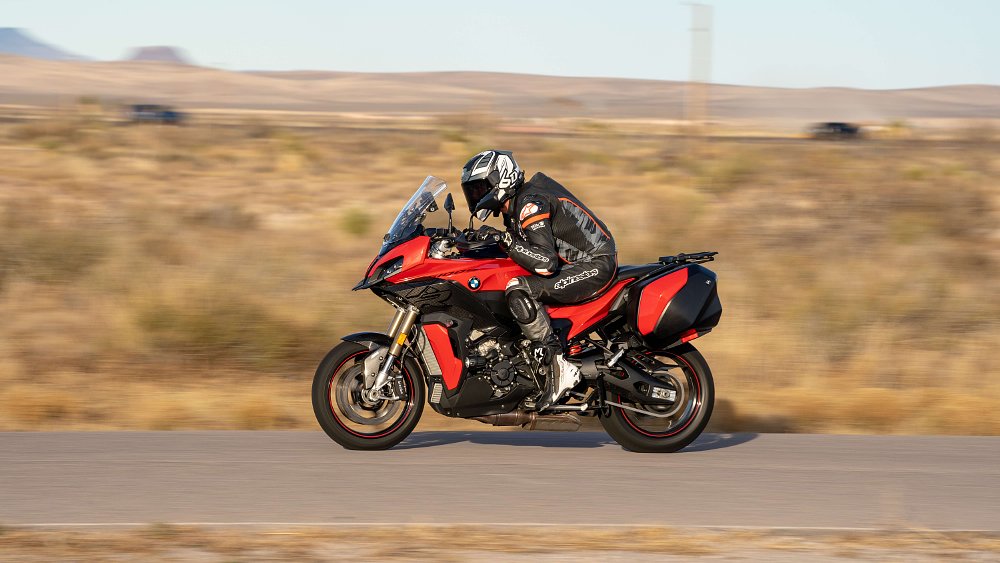
The XR is a much sharper tool than the Ninja 1000, and it certainly feels more dangerous to use. With TC off and the suspension-damping settings wound as tight as possible, squeezing the last bit of performance out of the big-n-tall S 1000 was a full-time job. Under hard acceleration it would break traction or stand up on the rear wheel, sometimes at the same time, and the combination of ultra-sharp brakes and advanced ABS made slowing down nearly as exhilarating. It is a mean, apex-clipping, Bavarian machine, and it shaved a second and a half off the Ninja 1000’s time: 1:15.5.
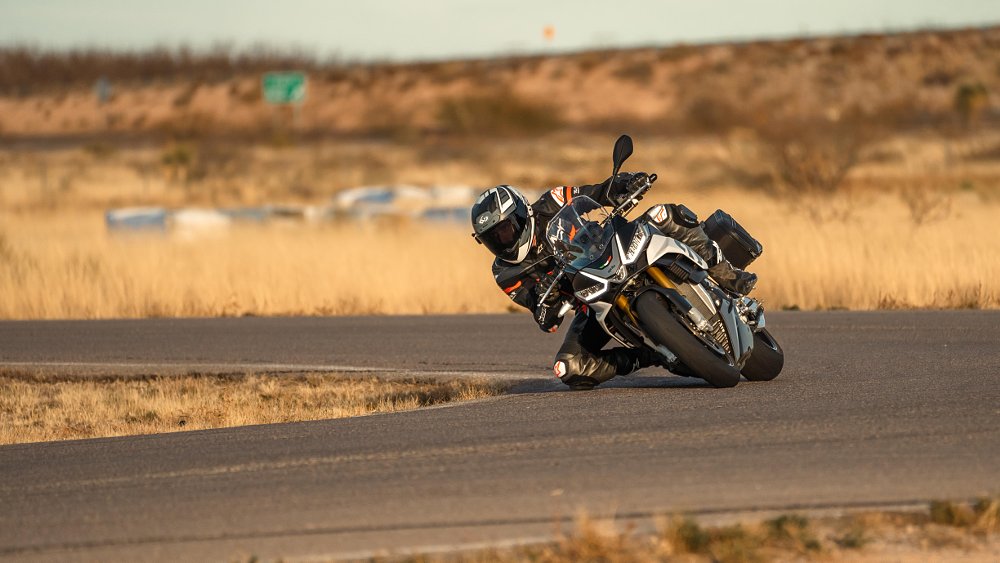
It was getting close. Then again, any racer will tell you that the last few tenths are the toughest. Unencumbered by limited cornering clearance, like the Ninja 1000 and S 1000 XR had been, the Tuono V4 also had the advantage of hilariously small luggage, the largest engine in the test, and a track-ready electronics package. The Aprilia’s wide handlebar and commanding riding position felt at home on Arroyo Seco’s tight and bumpy sections, but it was still carrying 30 extra pounds and making around 25 fewer horsepower than the ZX-10R.
Drumroll please…
In the end, the pros of the Tuono V4 outweighed the cons. The demons roared and the rear tire cried for mercy, but the deed was done. Small as the saddlebags and windscreen might be, some type of sport-touring bike had lapped Arroyo Seco with a time of 1:13.1, more than a second faster than the race-replica sport bike.
What happened? There are a few easy explanations, really. First of all, a small and technical track isn’t the forte of a 1,000 cc sport bike. Take this test to a fast, flowing circuit and the result would almost certainly be different.
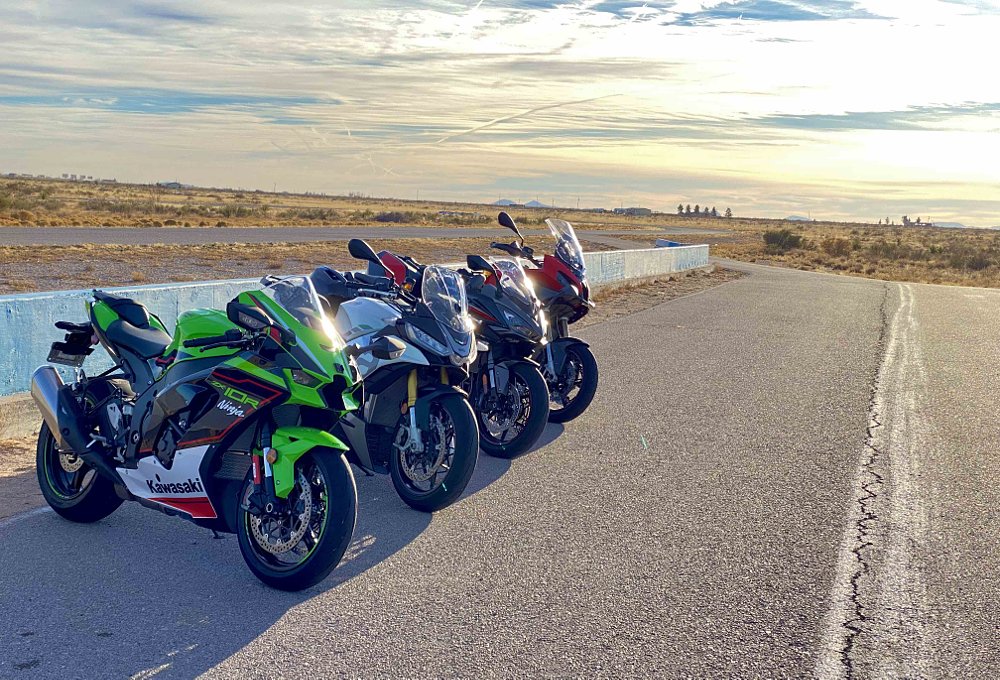
The ZX-10R is geared tall (good for about 180 mph, as we learned), and the engine doesn’t get to the meat of the power until the revs are pretty high. That meant that in slow corners the bike just wasn’t ready to accelerate until it got moving faster. Combine that with slightly abrupt on/off throttle response and you have a bike that’s a little tricky to hustle between tight corners. Also, let’s take a minute to admit that the Tuono V4 isn’t really a sport-touring bike — it fits our definition, and for a performance bike it’s darned good on a road trip, but let’s call a spade a spade. To be perfectly honest, we didn’t set out to find a dramatic conclusion, promise, we just couldn’t afford to rent Laguna Seca and this is how the cookie crumbled.
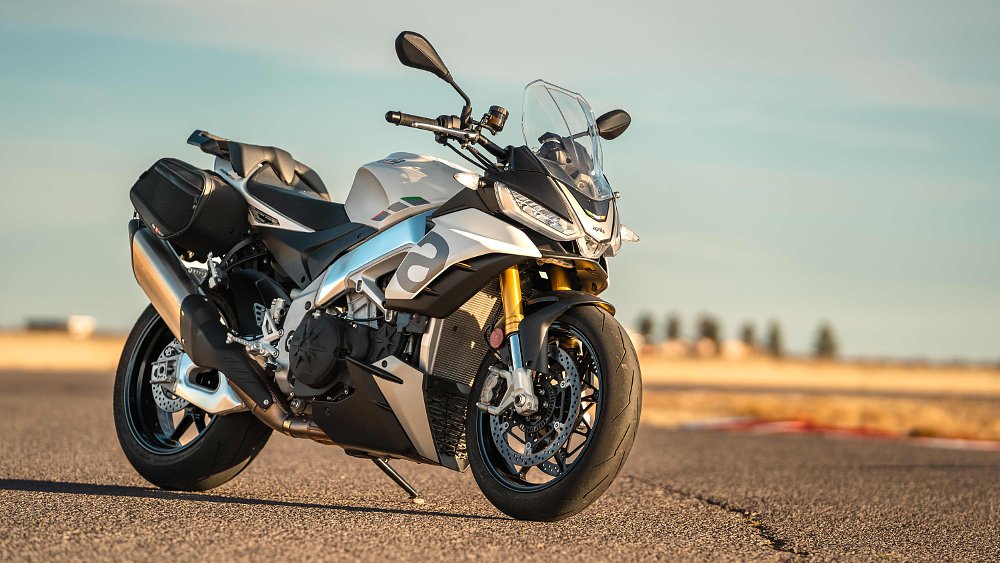
We should also acknowledge the last explanation of what happened here, which is that sport-touring bikes have become seriously sporty. Gone are the days of a Yamaha FJR1300 or BMW K 1300 being the quickest baggers around. The category has mutated and evolved to include some class-defying machines. If you think this is where we’re going to get all misty-eyed and sob about what a wonderful time it is to be a motorcyclist, you are absolutely right. Bask in it. Go forth, with your hands warm and your cruise beautifully controlled, knowing that your saddlebags won’t necessarily slow you down.











